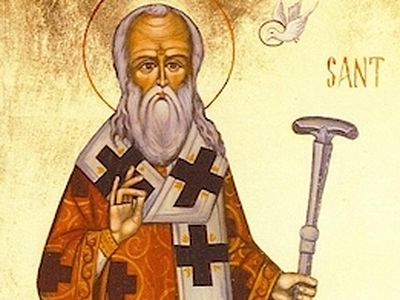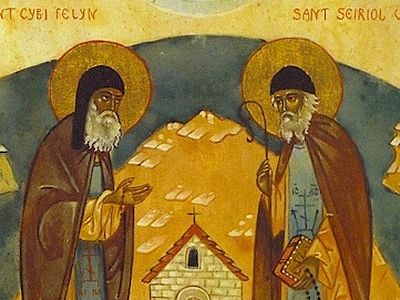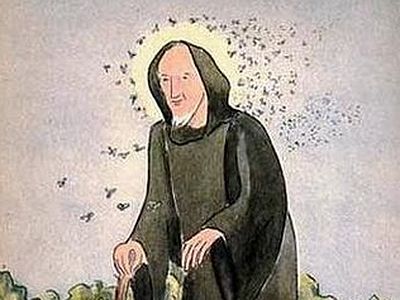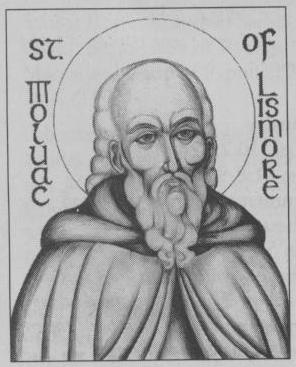
St. Moluog (also known as Moluoc, Moluag, Molua, Molloch, Lugaidh and under other forms)[1] was an Irishman destined to become one of the most venerated saints in Scotland. He was born in about 530 in what is now Northern Ireland to a noble family. His first monastery was Bangor in Ireland; and about the year 562 he crossed the Irish Sea and founded a monastery on the Scottish isle of Lismore. According to tradition, the rock on which the saint stood on the Irish shore miraculously separated itself from the mainland and drifted towards Scotland, delivering Moluog right to the isle of Lismore. It is recorded that another Irish saint, St. Comgall, who was Moluog’s spiritual father, came to Scotland together with him. Moluog became the first abbot of Lismore, and made this monastery the center of his mission in Scotland. Lismore was also the long time burial place of the Pictish kings.
 Isle of Lismore and hills, Scotland
Isle of Lismore and hills, Scotland
The saint’s two other principle monastic foundations, along with Lismore, were the Monastery of Rosemarkie in Ross and Cromarty, and the Monastery of Mortlach in Moray—both in northern Scotland. (Mortlach, like Lismore and Rosemarkie, later had a bishop’s see. Today, the name of this tiny town is Dufftown). The saint in fact established three main monastic centers and then founded countless smaller dependent churches and communities in districts adjoining each of them. He arranged the Church life of the newly-baptized Picts in such a way that both pastoral care and education at a high level would be provided first of all to every community. One late source claimed that Moluog “founded one hundred monasteries in Scotland”; obviously this is an exaggeration, but all the same it is indicative of the extremely influential missionary and teaching activities of this saint of God in the country. No doubt through his disciples 100 monasteries were established.
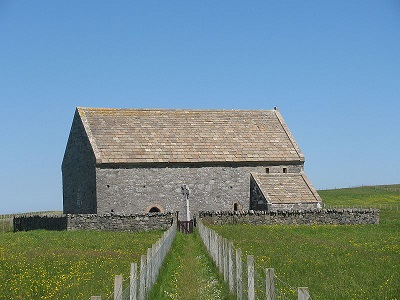 St. Moluog's Church in Eoropie, Lewis and Harris
St. Moluog's Church in Eoropie, Lewis and Harris
Today, numerous churches in several of the main regions of Scotland are dedicated or at least connected with this saint (some of them were re-dedicated to other saints when Scotland became Roman Catholic, or otherwise after the Reformation). In many cases it is difficult to say if one or another church was originally erected by Moluog himself or by one of his disciples of the first or second generation. According to a popular tradition, in Lewis (Outer Hebrides) the name of St. Moluog was invoked against madness, and many lunatics were healed there. Moluog’s staff, made of blackthorn and gilded with copper, is kept in Lismore to this day. The saint’s personal bell, another relic associated with him, existed until the Reformation when it disappeared. However, afterwards in Argyll a very ancient bell was discovered, which was presumably recognized by some to be that same bell of Moluog! St. Moluog is considered by many to be one of the chief apostles of the Picts in Scotland. For many centuries he was officially venerated as the patron-saint of Argyll. Lismore (now situated in the Argyll and Bute administrative area), founded by him, was a significant center of Celtic Christianity in western Scotland. In the Middle Ages it also had a large and prosperous diocese, with St. Moluog as its patron.
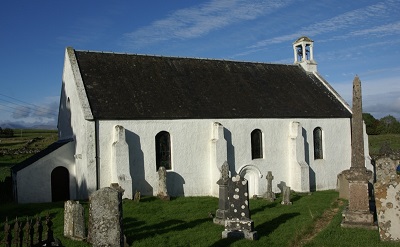 Former St. Moluag's Cathedral in Lismore
Former St. Moluag's Cathedral in Lismore
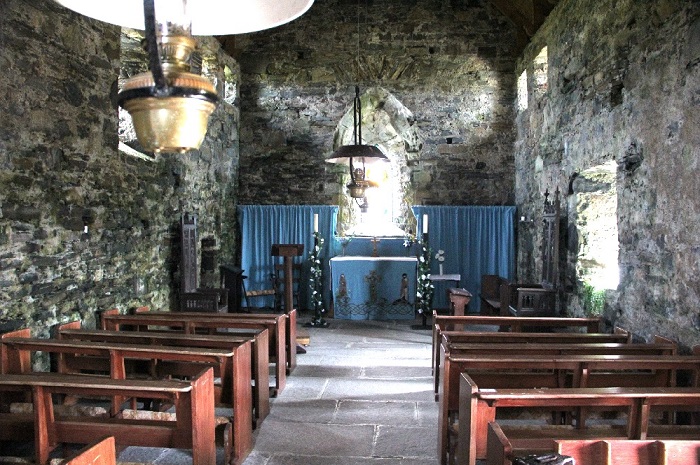 Inside St. Moluog's Church in Eoropie
Inside St. Moluog's Church in Eoropie
A thirteenth century church in the small village of Eoropie in Lewis (the most northerly village in the Isle of Lewis) is dedicated to St. Moluog. Most probably the saint named Ronan (who later lived on the isle of Rona) built the original church that stood on this site. The church has two side-chapels, and there are also ruins of two other ancient churches nearby, to the northeast and southwest respectively. It was in this church that madmen were cured through the prayers of St. Moluog throughout the centuries, even after the reformation. Not only lunatics, but those afflicted with various other ailments received healing there. According to tradition, the sick who were unable to reach this remote island village sent small wooden figures of their diseased organs and limbs to the church—and nevertheless were miraculously cured. According to evidence from the seventeenth century, such wooden figures were still lying on the altar of this church, and miracles were occurring there at that time.
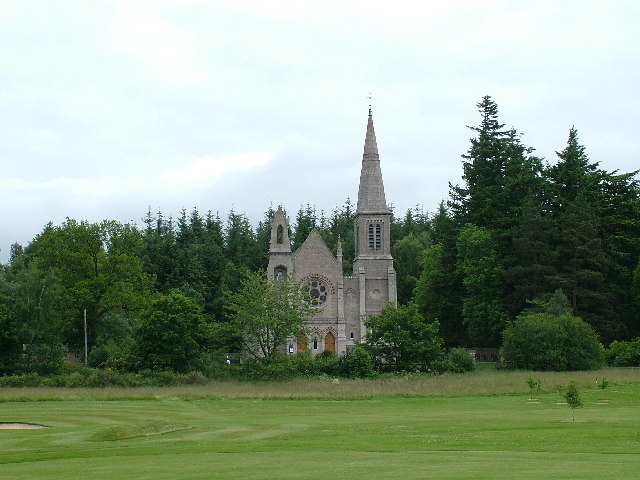 St. Moluog's Church in Tarland, Aberdeenshire
St. Moluog's Church in Tarland, Aberdeenshire
An early church in the ancient village of Tarland in the county of Aberdeenshire is dedicated to St. Moluog, and this is not the only church dedicated to our saint in this county. Once Tarland hosted an annual fair in honor of Moluog as did the village of Clat in the same county—there the fair lasted for eight whole days. A church in Clat is dedicated to him as well.
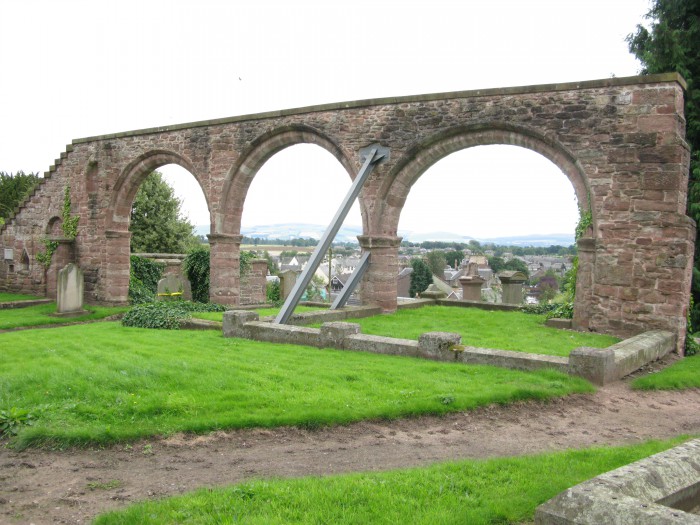 Ruins of St. Moluog's medieval Church in Alyth, Perth and Kinross
Ruins of St. Moluog's medieval Church in Alyth, Perth and Kinross
Dufftown, where Moluog founded one of his great monasteries, is now famous as a producer of scotch. From time immemorial Moluog was the main patron of the area. In 1010 a new monastery was erected (or the old one re-founded) here as a sign of gratitude by the Scottish king Malcolm II, who prayed to him to protect the Scottish army at the battle of Mortlach against the Danes, and received his help. It is believed that from that time a portion of the saint’s relics was preserved there.
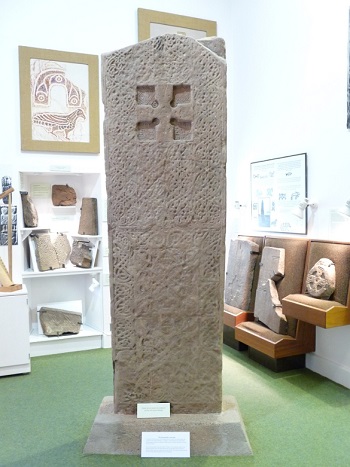 A Pictish stone in Rosemarkie (8th century)
A Pictish stone in Rosemarkie (8th century)
Churches dedicated to St. Moluog can also be found on the Scottish islands of Skye, Tiree, Mull, Pabbay and Raasay. A huge number of place-names across Scotland comprise diverse forms of his name (sometimes corrupted) and thus bear evidence to his or his disciples’ activities. For example, two settlements on the Kintyre peninsula in western Scotland in Argyll and Bute are called “Kilmoluag” indicating that churches in his memory were once founded in these places. Also ancient churches or chapels established by St. Moluog exist or formerly existed in Morvern, Inverary, Ballagan, Rhynie, Peffray, Cromarty, Clova, New Machar, Migvie and other sites. The Martyrology of Oengus, probably compiled by St. Oengus the Culdee, calls St. Moluog a pure, bright and pleasant man, and “the Sun of Lismore”.
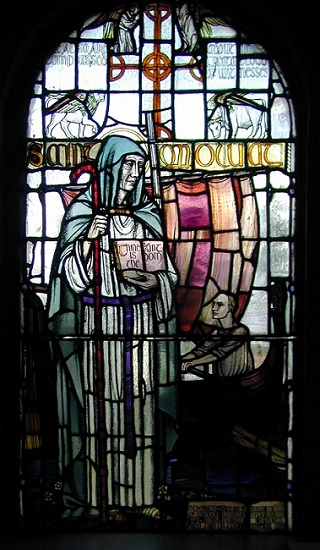 A window depicting St. Moluog inside his church in Lismore
A window depicting St. Moluog inside his church in Lismore
Holy Father Moluog, pray to God for us!
